Mixed Voice: 5 Easy Exercises to Find It and Grow It
If you’re a singer, you’ve probably heard of a strange and mythical beast called the mixed voice.
Mixed voice is a powerful yet often misunderstood tool in the singer’s toolbox.
Many singers wonder ‘why is mixed voice so hard’ and struggle with mixed voice cracks at first, but with proper technique and practice, these challenges can be overcome.
Today, we’ll go over the basics of mix voice singing, look at some common misconceptions surrounding it, and discuss how you can achieve it in your singing.
Then we’ll work through 5 daily mixed voice vocal exercises for singers to help you develop your own mixed voice.
Once you understand and master mixed voice, you’ll unlock a whole new world of untapped singing potential.
If you’ve been scouring the internet wondering how to find mixed voice and how to get a strong mixed voice, you’ve come to the right place!
By the way if you want a great video that walks you through mixed voice, check this out:
What is Mixed Voice?
Understanding mixed voice meaning and what is the mixed voice is essential for any aspiring vocalist.
Mixed voice meaning encompasses both the technical aspects of vocal production and the practical application in performance.

Before we jump in, let’s look at a definition of what mixed voice actually means…
If you’re asking yourself ‘what is a mixed voice’ or ‘how to use mixed voice,’ you’re not alone. Mixed voice placement is crucial for achieving a balanced sound, and while some worry that mixed voice is nasal, proper technique actually creates a clear, resonant tone.
But don’t worry…
No matter where you are right now, you can smoothly sing through your whole vocal range.
That means no vocal break or strains when you sing.
And to listeners, mixed voice sounds like one single voice.
What’s So Great About Mixed Voice?
With that out of the way, what does mixed voice mean for you as a singer?
Mixed voice is the richest, strongest, and most controlled sound the human voice can produce.
When done right, it generates a beautiful and even vocal tone across your entire vocal range.
With mixed voice, singers can bridge the gap between high and low registers known as chest voice and head voice. The mixed voice range spans the gamut from high to low notes.
If a song requires that you hit high notes with power, mixed voice is the way to go.
To understand mixed voice and its placement in the singer’s toolbox, let’s look at its two main ingredients: chest voice and head voice.
Chest and Head Voice: Pros and Cons

Head Voice
First off, the term “head voice” is a bit misleading.
No matter how you sing, all sounds come from your vocal cords in your throat, not your head.
However, when you hit those really high notes, it sure does feel like the sound is ringing straight out of your own head!
Head voice is soft and tender, yet full and strong.
Imagine a strong, silent-type hero or heroine from a movie: quiet and reserved, but with unmistakable inner strength.
Head voice is ideal for R&B, soul, and indie rock where you want to hit those high notes while maintaining a full and rich tone.
Head voice is absolutely required to expand your vocal range since all your high notes come from head voice.
However, head voice is not the same thing as falsetto.
Think of head voice vs. falsetto like this: falsetto sounds breathy, airy, and somewhat hollow, while head voice retains much more tonal depth.
Chest Voice
Chest voice is the vocal register we normally use when speaking.
It uses your larger, thicker vocal cords.
To sing in your chest voice, put your hand on your chest, and you’ll feel a vibration in your upper torso.
Chest voice is low, thick, strong, and warm.
Chest voice is responsible for singing with power.
It’s also great for belting out a blues romp or a powering through a grungy rock song.
(A lot of people ask me about mixed voice vs. belting. See my article on belting for more on that!)
However, the vocal range of chest voice is pretty limited.
If you try to ‘push up’ your chest voice to higher notes, they will sound flat and strained.
A similar straining occurs when fret high notes on the lower strings of a guitar.
You can play high notes on the 15th fret of the low E string if you want, but they will sound flat, and lose a lot of tone.
Mixed Voice: The Best of Both Worlds!

When comparing mixed voice vs head voice, or understanding mixed voice vs belting, it’s helpful to look at how professional mixed voice singers use these techniques.
While many ask ‘how to mixed voice’ or ‘how to do mixed voice,’ the key is understanding that singing mixed voice requires patience and proper technique.
Mixed voice combines the beautiful highs of head voice with the deep and strong lows of chest voice.
Many successful mixed voice singers like Brendon Urie and Ariana Grande demonstrate this technique beautifully.
What’s the difference between belting and mixed voice? While both techniques can produce powerful high notes, mixed voice offers more control and sustainability.
It lets you access your entire vocal range at its full power, tone and richness.
Learn to sing consistently in mixed voice, and you’ll have the freedom to switch to other voices whenever you see fit.
With mixed voice, you can be a vocal chef!
Sprinkle in some chest voice here, a pinch of falsetto there, and stay in total control of your singing at all times.
Mixed voice is, in short, the ultimate way of learning how to sing flawlessly.
What is Mixed Voice, Really?
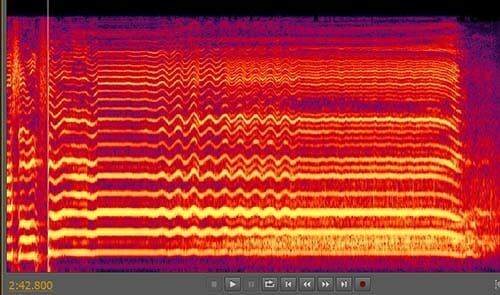
Some Common Misconceptions
How do you get a mixed voice, actually? Let’s clear up some common misconceptions about the meaning and definition of mix voice.
Most teachers present mixed voice as just that: mixing head and chest voices into a single sound.
For most practical intents and purposes, that’s a fine mixed voice definition.
However, this is a bit of an oversimplification.
Chest and head voice both use different vibration patterns in the vocal cords.
That’s why you can’t sing with both low and high cords at the same time.
So in order to truly understand the meaning of mixed voice, we have to talk about the vocal cords…
A Word on the Vocal Cords
Vocal cords, also called vocal folds, work by opening and closing in quick succession.
By letting puffs of air through your throat at certain rates, they generate different pitches of sound.
Humans have two ‘true’ vocal cords.
These are the vocal cords that are responsible for most singing.
In case you’re curious, we also have two ‘false’ vocal cords.
These are technically vestibular folds located just above the true cords.
You might think that false cords would be used in falsetto singing, but this is not the case.
Actually, false cords make a deep, sonorous, and guttural tone that you hear in vocal fry.
They’re best used in screaming vocal styles like death metal, or in movies when actors are portraying an evil villain or gritty anti-hero.
But here’s what you need to know about the “true” vocal cords:
When the vocal cords are thick, they vibrate slower, producing chest voice.
Here’s what that looks like:
When the vocal cords are thinner, they vibrate faster, producing head voice.
And here’s what the thin vocal cords look like:
Can Vocal Cords Be Mixed?
Almost all singing is done with just the two true vocal cords.
Here’s the thing though:
Most scientific studies have concluded that, at a certain point, everybody switches between thick cords and the thin cords.
There is no middle ground where both thick and thin cords are opening and closing at once.
However, you can can have a moderate amount of cord thickness from the bottom to top.
That’s mixed voice!
But the idea that you can actually mix chest and head voice together in the way that painters might mix pigments to form a new color ain’t true.
Want to Nail Those High Notes?
Every singer wants to expand their range. Expand Your Range Fast will show you how to finally hit high notes in your voice without straining. Expand your range by 5 notes or more!
Smoothing Out Vocal Breaks
So, if I can’t literally mix voices or vocal cords, how do I know if I’m using mixed voice? Is just switching between chest voice and head voice the same as mixed voice singing?
Great questions!
Mixed voice is all about a seamless transition from thick to thin vocal cord, from chest to head voice.
There should be no audible break between them.
So what’s the secret?
Well, if you keep your vocal cords opening and closing evenly from the bottom to the top of your voice you’ll achieve a full, rich, and continuous tone across your entire range.
You may still notice a slight break when you make the switch from your chest to your head voice.
But listeners will perceive your singing as continuous and seamless, as if your head and chest voices were literally ‘mixed’ together.
The key is to switch between head and chest voices such that only you know where the break is.
After all, if a tree falls in a forest and no one hears it, did it really break between its head and chest voices?
Like Driving a Car

For example, think of singing in mixed voice like driving a stick-shift car.
Whenever you shift gears, you might feel a slight jolt or clunk as the new gear slides into place.
But people standing on the sidewalk just see a car gradually speeding up or slowing down.
If you’re really good a driving stick, even the passengers may not notice the transition.
The same principle applies to the singing voice. You may always feel the shift between chest and head, but if no one hears it, it sounds like one voice.
Five Fantastic Mix Voice Exercises

Now that we understand what mixed voice really is, we can start practicing and perfecting it.
These exercises are designed to help your vocal cords stay together and reduce the break between chest voice and head voice.
The goal is to make mixed voice a strong and reliable part of your singing repertoire.
But First: The 1.5-Octave Scale
Before diving into mixed voice examples and exercises, let’s look at the 1.5-octave scale.
This scale covers an octave and a half of range in ¾ time. You sing four triplet arpeggios: the first two going up; the next two going down and ending on the tonic.
Like this!
Tri-pl-et, tri-pl-et, tri-pl-et, tri-pl-et, done…
The 1.5-octave scale in C would be:

In the video, I start by demonstrating a 1.5-octave scale in B flat.
The point of the 1.5-octave scale is to access all the highs and lows of your singing voice.
Remember, we’re looking for a smooth transition from chest to head voice.
Don’t push your chest voice up to the top notes, and don’t do a ‘flip’ where you completely disconnect from the top part of your voice.
Keep it even.
Switch but don’t flip.
We’ll try singing the 1.5-octave scale with a variety of vowels and consonant sounds to practice smooth vocal transition in different ways.
Now, let’s get into the exercises!
1. The Lip Trill
In this mixed voice exercise, take two fingers on each hand, press them against the middle of your cheeks, and flop your lips together as you sing.
The resulting sound will remind you of a motorboat chugging down a stream.
Now sing the 1.5-octave scale while doing a lip trill!
As always, keep all your notes even and strong.
Here’s a video where I walk you through the lip trill exercise:
2. The “Gee”
The next of our mixed voice exercises is a little number I like to call the “gee.”
That’s “gee” as in “geese” without the “s.”
This one is great for establishing a smooth and even closure of vocal cords across your entire range.
The “e” vowel allows you to reach your head voice while the “g” consonant keeps your vocal cords opening and closing with every note of the scale.
The “gee” is a way to reach high notes without straining while allowing for smooth closure of all your vocal cords.
Remember, don’t push and don’t flip.
Don’t push your chest voice too high, and don’t suddenly flip from chest to head or from head to falsetto.
Here’s a great video to show you how to do the “Gee”:
3. The Bratty “Nay”
If you’ve made it this far, awesome job!
The next exercise will build even more vocal cord closure.
To do the “nay”, pretend that you’re a bratty little kid who is sure that no one can catch him at tag.
You might also imagine a cackling, crooked-nosed witch about to cast a hex on an unsuspecting victim.
Like the “gee”, the “nay” helps connect low and high notes while forcing the vocal cords to close consistently.
As always, here’s a great video to walk you through this exercise:
4. The “Nae”
If you’re having trouble smoothing all the breaks and flips out of your singing, this exercise is for you.
The “nae” is like a very bratty and sassy way of saying “nasty.”
This exercise uses an open vowel and will help you belt better.
It builds in a bit more power and solidity into your top notes.
The “nae” also reduces the break when you switch from thin to thick vocal cords.
5. The “Gug”
This last exercise uses another sound to help your vocal cords stay together.
The “gug” is just the word “gut” but with a “g” at the end.
Whereas the “gee” from exercise 2 carries you into your head voice and reduces the risk of straining, the “gug” is more of chest-based sound.
The “gug” is great for perfecting your shift from chest to head voice.
It allows for a natural and balanced tone.
With this exercise, you can control your chest voice and allow your head voice to come in quickly and effortlessly.
Check out the “Gug” exercise here:
Concluding Thoughts
Congratulations!
Many beginners ask ‘how to find your mixed voice’ and ‘is it hard to learn mixed voice?’ While mastering this technique takes time, these exercises provide a solid foundation.
Famous mixed voice singers have spent years perfecting their craft, showing that dedication to proper technique pays off.
So, If you’ve been following these exercises, you’re already well on your way to mastering mixed voice.
But if you are still experiencing some breaks or strain, or still wondering how to know if you’re singing in mixed voice, don’t worry!
Everyone feels a switch when transitioning from their chest to their head voice.
The trick is to make sure no one else hears it.
Record Yourself

“How do I know if I’m using mixed voice correctly?” you may still be wondering? Try recording yourself!
Recording and listening to yourself is a great way to iron out the last few kinks in your mixed voice technique.
It lets you step outside of your own head and hear your voice from the audience’s perspective.
Try recording yourself singing these exercises and make a note about where you thought you switched between chest and head voice.
Then play back the recording and check for two things.
First: did you hear any break?
Second: if you did, do you think you would have noticed it if you weren’t looking for it?
If you heard no break at all, fantastic!
If you heard a very small break, that’s still an impressive achievement.
The Road Ahead

Thanks again for reading! I truly hope these exercises for mixed voice help you learn how to sing in mixed voice with confidence and grace.
How long does it take to develop mixed voice? Well, like most good things, mixed voice will not come to you overnight.
It can be challenging at times and requires regular daily practice to master.
But before long, you’ll be singing in a beautiful and strong mixed voice without any breaks, flips, pushing, or strain.
Have any favorite mix voice examples or mix voice songs that you like to practice with? I’d love to hear about them in the comments!
If you put in the effort to learning mixed voice, it will serve you well throughout your singing career.
By the way, if you want to learn to sing in a beautiful mixed voice, check out my complete singing course Master Your Voice.
Want to Nail Those High Notes?
Every singer wants to expand their range. Expand Your Range Fast will show you how to finally hit high notes in your voice without straining. Expand your range by 5 notes or more!





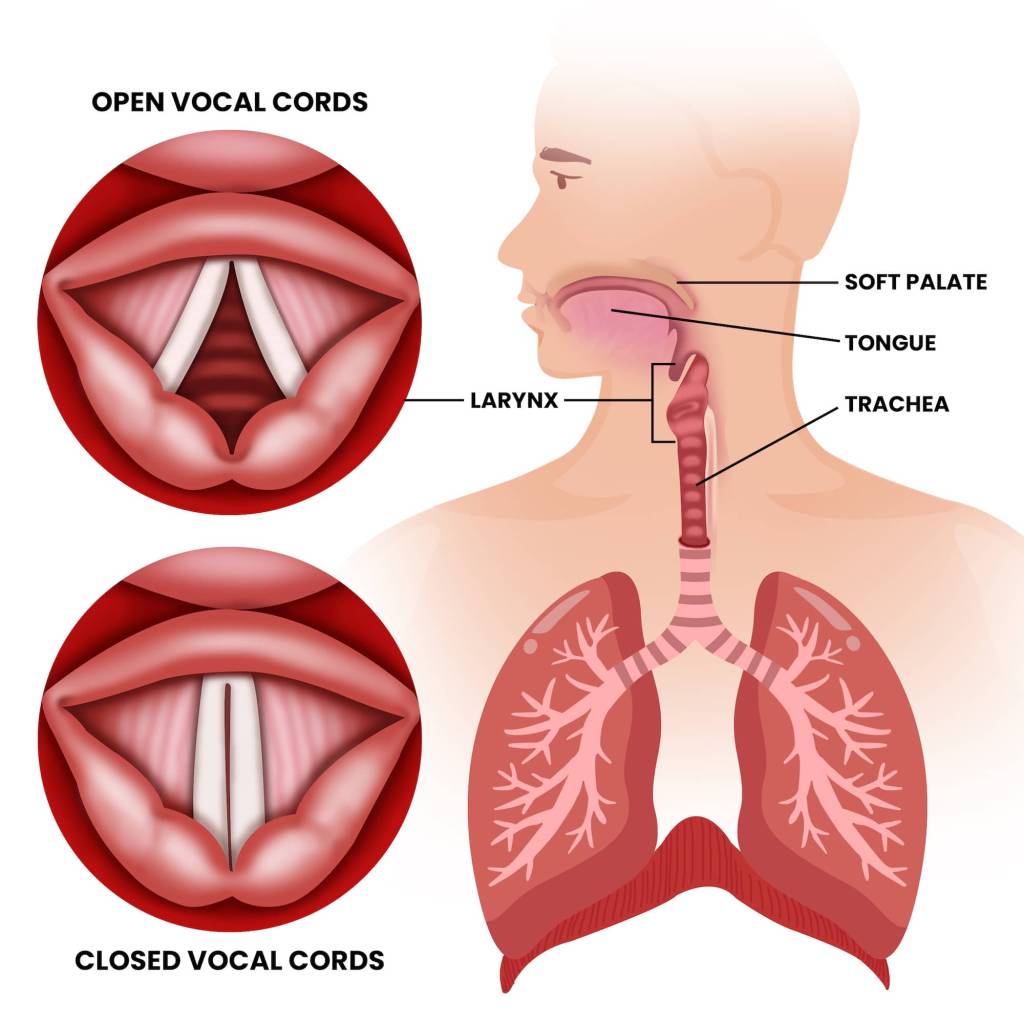
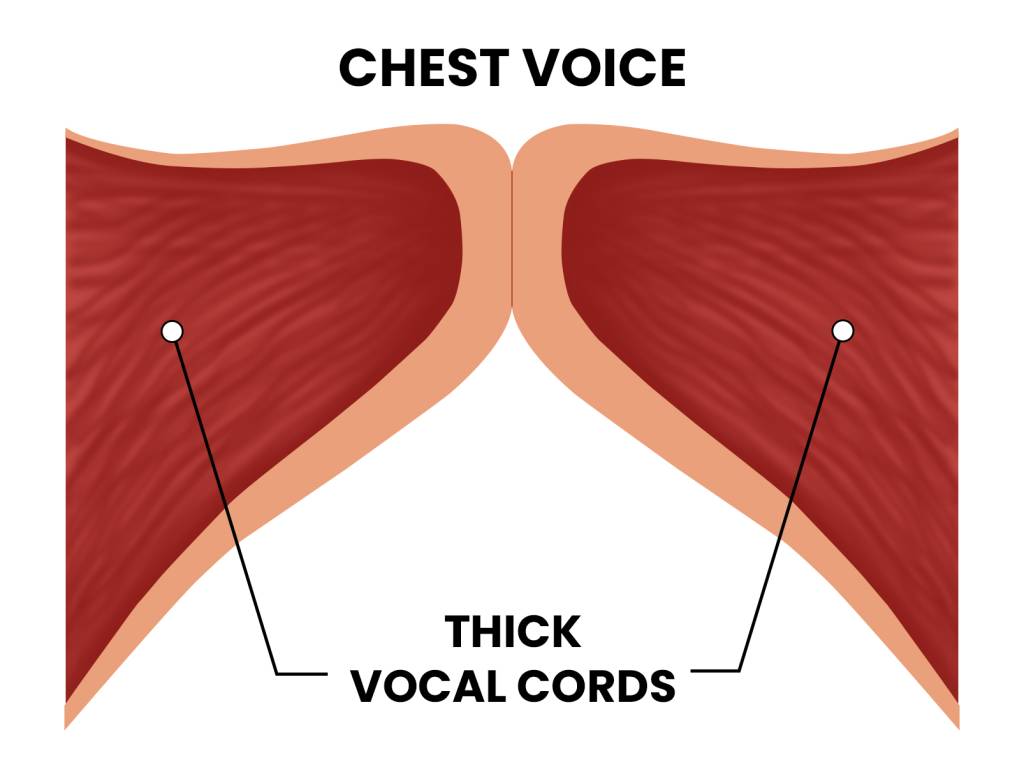
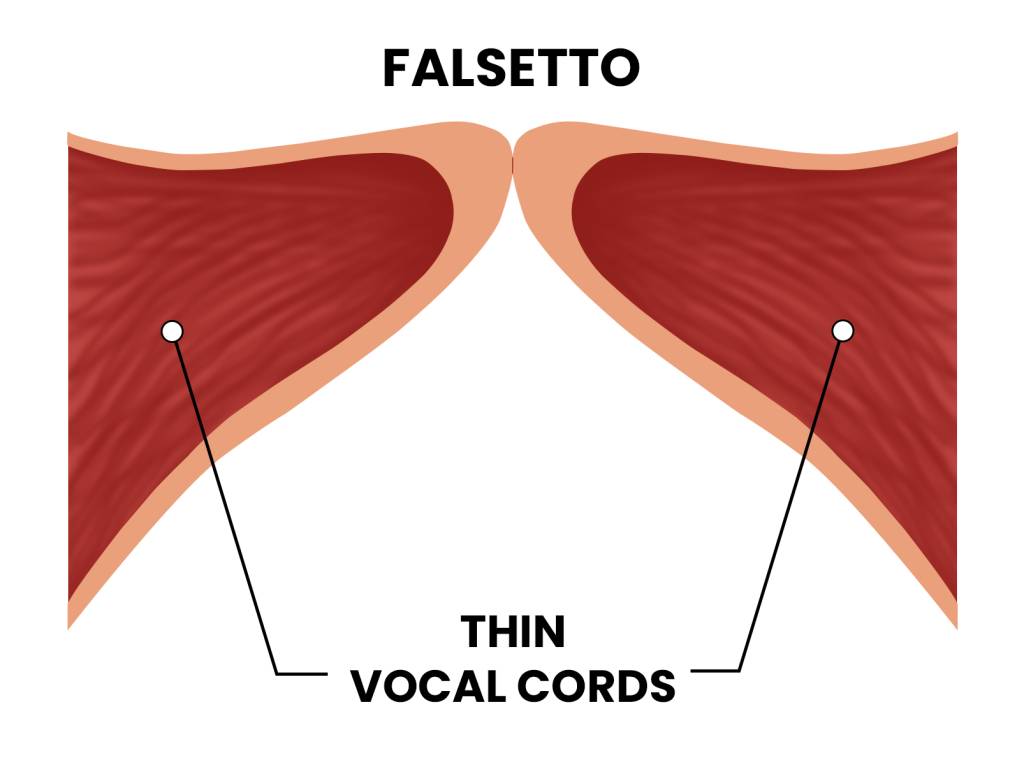
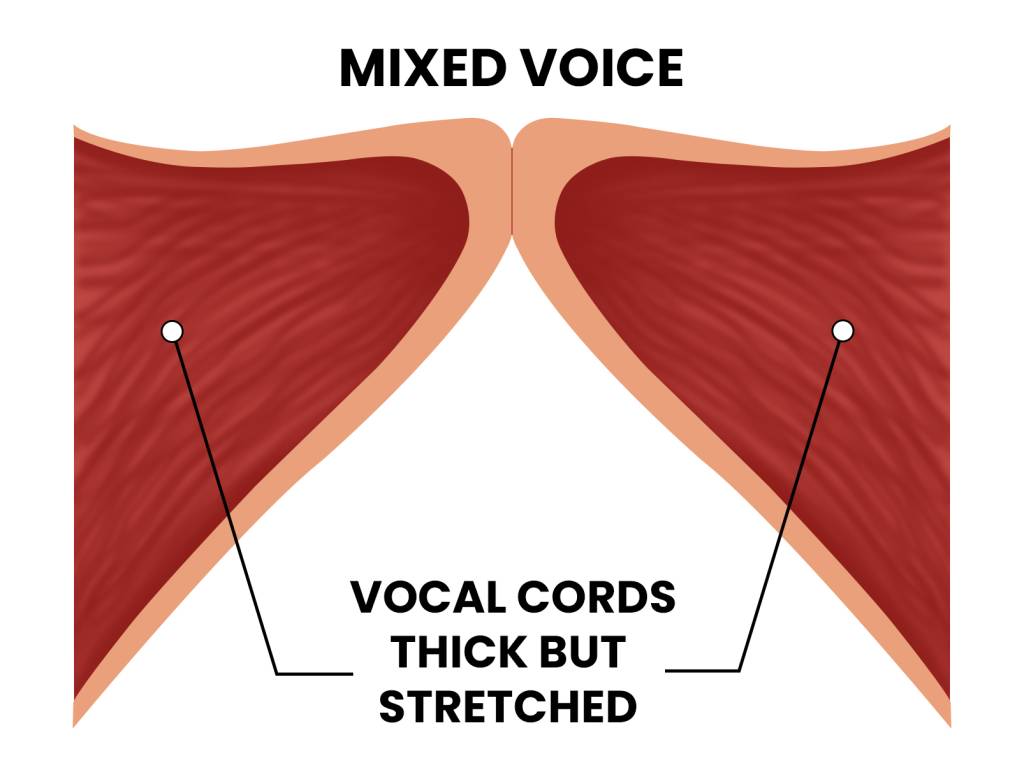




12 Comments
it seems like any singing exercise can be used to find head voice and mixed voice. am i right or wrong about that? what about the ‘NG’ exercise? where do i find that exercise in your courses?
Besides the ‘gee’ exercise, the ‘ng’ exercise is by far the most successful exercise for me. Recently, i find that i have been feeling too many sensations in my chest and just slightly reach my head voice. great article. Thanks.
Hey Glenn, not every exercise is easy to use when singing from chest voice to head voice.
Typically, more open vowels like “Ah” are a bit harder.
The “ng” exercise we worked on is available in the Master Your Voice course.
However, you should still have that exercise on your recording from our work together in lessons.
The mythical creature called “mixed voice” I’m coming to fight you with the mighty armor of Ramsey studios !!!
Haha!
Very helpful exercises!
Awesome! Glad you found them helpful.
Yes they are helpful
Wow, AMAZING!…I can simply say the ” voice” is indeed such a priceless sweet GIFT from god!
thanks for these.. keep it up it is soo helpful for us.thanks so much
My pleasure Eve!
Hi Matt! I read this article and, although I haven’t watched the videos as of yet, I can say that reading this has educated me quite a bit! I remember a couple of months ago I saw something about the head/chest voice thing, but I was a little confused about it. I remember thinking, “Head voice? Chest voice? What’s the difference, humans only have one voice!” But now after reading this, it makes a lot more sense! I will definitely watch the videos when I have the chance!
So glad to hear that Arianna!